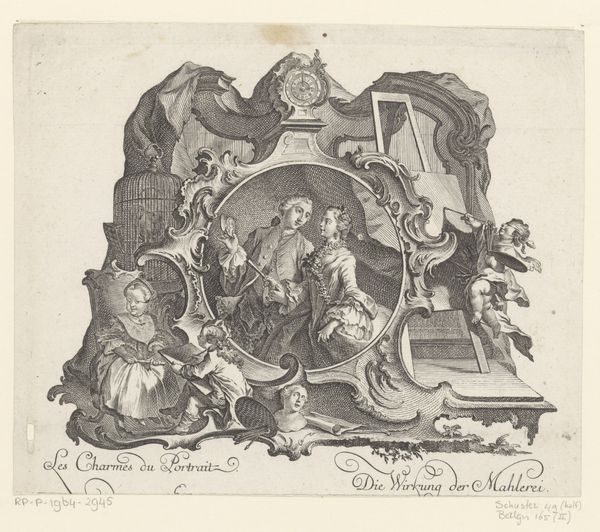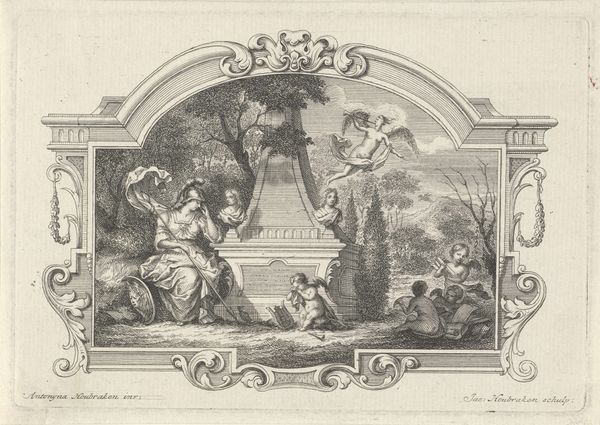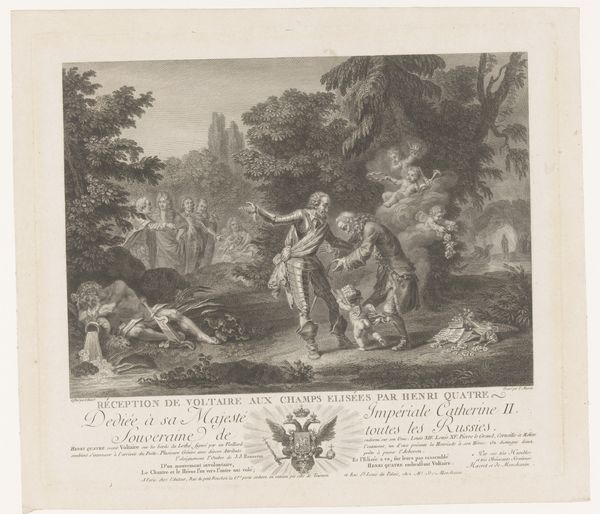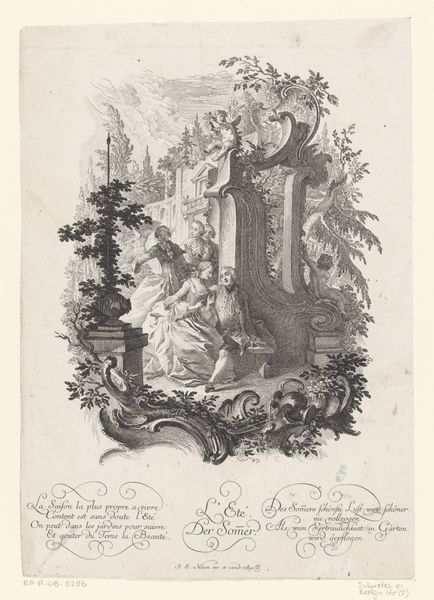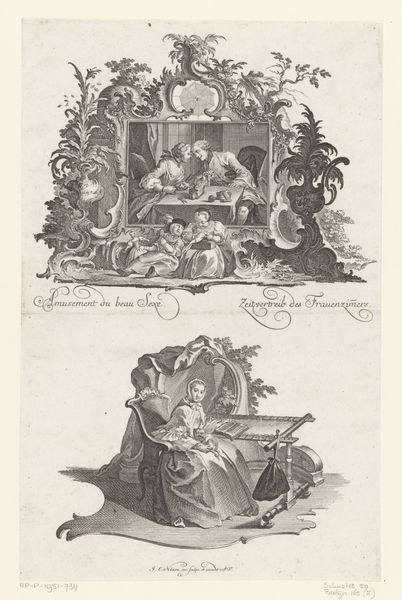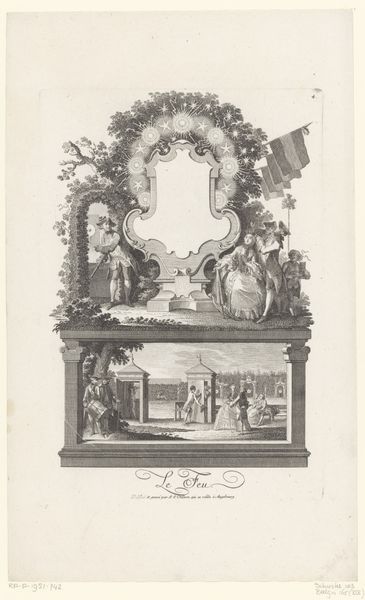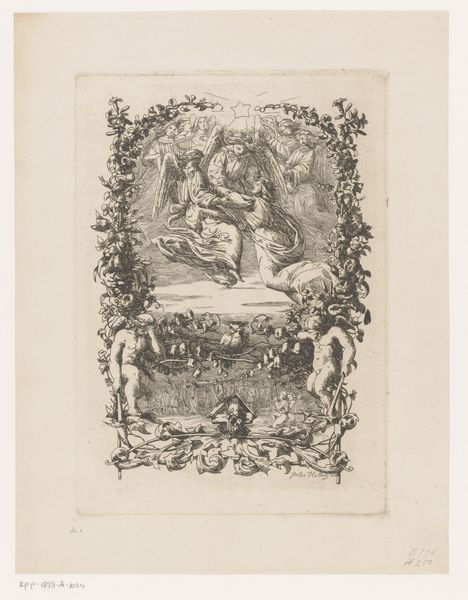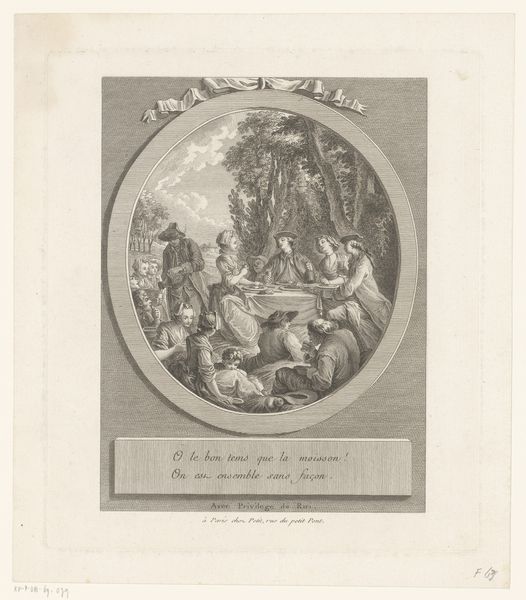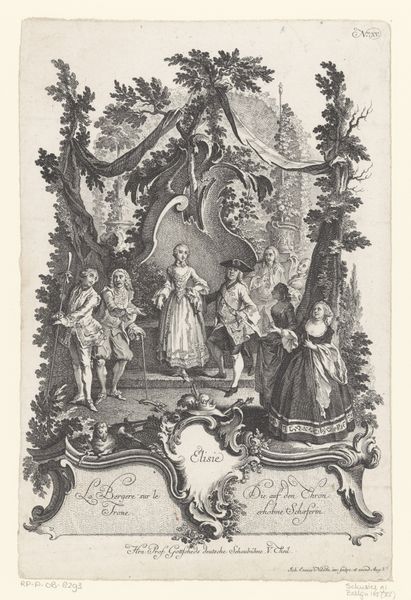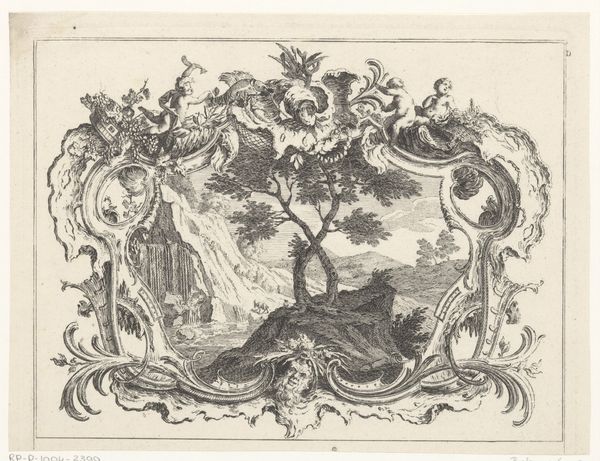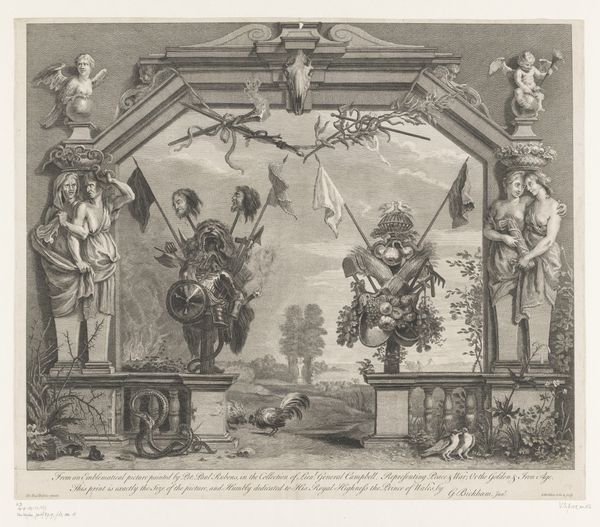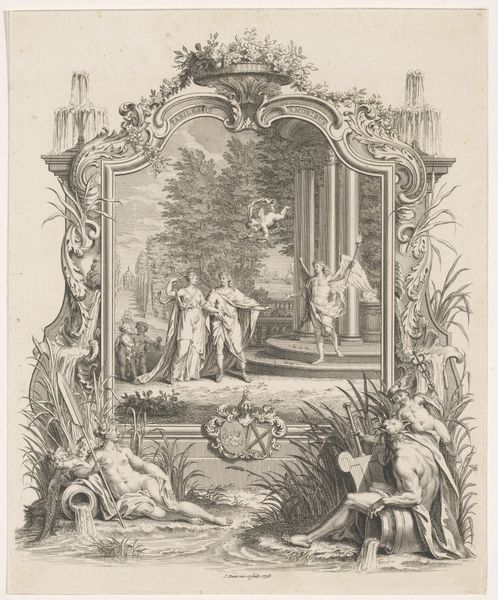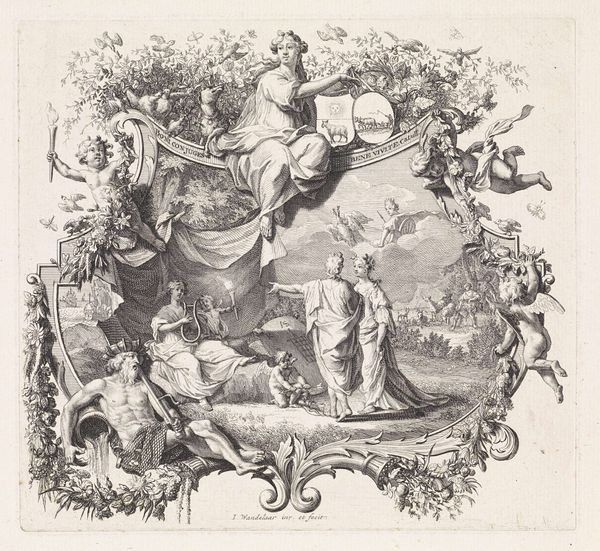
print, engraving
#
baroque
#
pen drawing
# print
#
landscape
#
figuration
#
line
#
genre-painting
#
engraving
#
rococo
Dimensions: height 157 mm, width 185 mm
Copyright: Rijks Museum: Open Domain
Editor: Here we have Johann Esaias Nilson's "Dancing Couple," an engraving dating back to sometime between 1731 and 1788. It’s so intricate! All those swirling lines give the scene a real sense of movement, a lively energy. What do you make of the composition? Curator: Indeed. Notice how Nilson utilizes the rococo style, framing the central dancing figures within an ornate cartouche. Observe the line work; it is delicate yet precise, defining forms and creating tonal variations. Editor: The way the artist uses line really does create depth despite it being a print. Are you talking about how the central oval is balanced by those figures playing music, almost mirroring one another? Curator: Precisely. It's about dissecting the interplay between these formal elements. The curvilinear forms dominate. How do you see the figures interacting? What's being communicated by the space in between figures and frame? Editor: I think their body language suggests flirtation and playfulness but the placement in the frame, creates a boundary of civility, that maybe mirrors a power dynamic? Curator: You raise an interesting point. Note the controlled yet spirited rendering of the figures in their environment. Through such semiotic readings, one can decode Nilson's constructed vision of society. Editor: It’s amazing how much analysis you can derive from seemingly simple lines! This has deepened my understanding about considering form and technique. Curator: It underscores how visual analysis is essential to unlocking deeper understanding of the artwork.
Comments
No comments
Be the first to comment and join the conversation on the ultimate creative platform.
